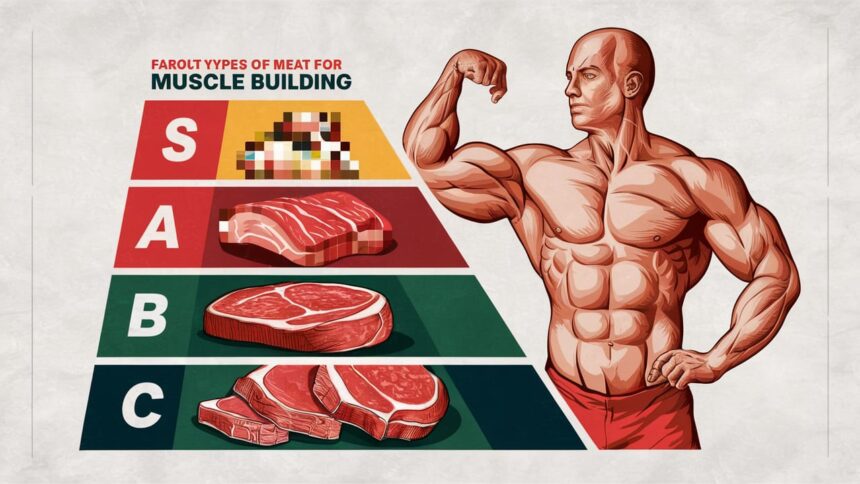Protein is an essential macronutrient that plays a vital role in various bodily functions, including muscle repair, immune function, and hormone regulation. However, not all protein sources are created equal. In this guide, we will delve into the ultimate tier list of protein foods, ranking them from best to least optimal based on several criteria, including protein content, bioavailability, nutritional value, accessibility, and cost-effectiveness.
Understanding Ranking Criteria
Before diving into the tier list, it’s essential to understand the criteria used for ranking protein sources:
- Protein Content: The amount of protein per serving is a crucial factor in determining a protein source’s quality.
- Bioavailability: This refers to how easily the body can absorb and utilize the protein. Factors such as digestibility, amino acid composition, and processing methods influence bioavailability.
- Nutritional Value: In addition to protein, the presence of vitamins, minerals, and other nutrients enhances the overall nutritional value of a protein source.
- Accessibility and Cost-Effectiveness: Practicality and affordability are important considerations, ensuring that the top protein choices are feasible for everyday consumption.
Exploring the Tier List
Let’s begin our exploration of the tier list, starting from the least optimal protein sources and ascending to the best:
D-Tier: Least Optimal Protein Sources

- Processed Meats: Despite being rich in protein, processed meats come with high saturated fat and sodium content, posing risks to heart health.
- Protein Bars: While convenient, protein bars often contain added sugars and artificial ingredients, detracting from their nutritional value.
- Canned Protein Sources: While practical, canned proteins may contain added sodium and preservatives, making them less optimal compared to fresh options.
C-Tier: Decent but Less Optimal Protein Sources
- Peanut Butter: A beloved spread, peanut butter offers protein but may contain added sugars and oils. Opt for natural varieties with minimal additives.
- Milk: While a good source of protein and essential nutrients, lactose intolerance may limit accessibility for some individuals.
- Tofu: A versatile plant-based protein, tofu is rich in protein but may have lower bioavailability compared to animal-based sources.
B-Tier: Reliable Protein Choices
- Quinoa: A nutrient-dense grain, quinoa is a complete protein and a gluten-free alternative. It’s suitable for various dishes and dietary preferences.
- Black Beans: Rich in protein and antioxidants, black beans offer heart-healthy benefits and are versatile in cooking.
- Cottage Cheese: High in protein and low in fat, cottage cheese is a nutritious snack option that supports muscle repair and bone health.
A-Tier: Excellent Protein Sources
- Salmon and Tuna: Rich in protein and omega-3 fatty acids, seafood offers cardiovascular benefits and supports brain function.
- Greek Yogurt: High in protein and probiotics, Greek yogurt aids in digestion and promotes muscle recovery.
- Lean Beef: A source of high-quality protein, lean beef provides essential nutrients like iron and vitamin B12 for muscle health.
S-Tier: Best Protein Sources
- Eggs: A complete protein source, eggs are versatile, affordable, and packed with essential nutrients.
- Chicken Breasts: Lean and versatile, chicken breasts are a staple protein source for muscle building and weight management.
- Whey Protein: Ideal for post-workout recovery, whey protein offers rapid absorption and supports muscle synthesis.
Incorporating Protein Sources into Your Diet
To optimize your protein intake, consider the following tips:
- Diversify your protein sources to ensure a balanced nutrient intake.
- Plan meals ahead to include a variety of protein-rich foods throughout the week.
- Consider dietary preferences, restrictions, and budgets when selecting protein sources.
- Stay informed about nutritional research to make informed decisions about your diet.
Conclusion
Choosing the right protein sources is essential for maintaining a balanced and nutritious diet. By understanding the ranking criteria and exploring the tier list of protein foods, you can make informed choices that support your health and fitness goals. Remember to prioritize diversity, practicality, and nutritional value when incorporating protein sources into your meals.
Read More:


